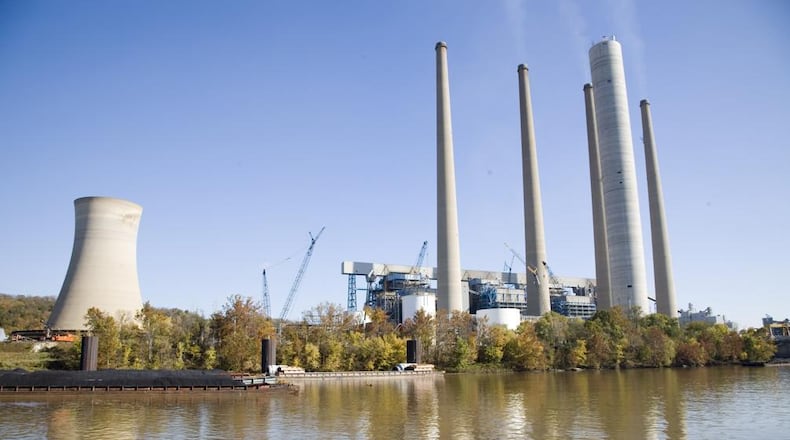“The proposed rule has significant economic and operational implications for the electric sector,” Patrick O’Loughlin, Buckeye Power CEO and president, said in a June 5 request to Michael Regan, EPA administrator. “There is a substantial amount of material to review to fully understand EPA’s proposal and provide meaningful comments.
The EPA last month proposed rules that would force nearly all American power plants that generate electricity to capture carbon or otherwise cut fossil-fuel emissions by 2038.
The rules would apply to plants that run on coal and natural gas. As some in the electric industry see it, the Biden administration’s proposal would push utilities to outfit power plants with expensive carbon-capture technology or add clean hydrogen fuel.
In a recent interview, O’Loughlin said he was uncertain how American electric utilities can comply with the rules as proposed.
Carbon-capture technology is still in its infancy, and no power company has on a continuous basis been able to achieve what the EPA has proposed, he said.
Cost and infrastructure are key issues, in his view. For example, O’Loughlin said it would require some 6,000 acres of solar panels and cost $1.5 billion to replace even one of the company’s three 600-megawatt coal generation units.
“It’s pretty daunting,” he told the Dayton Daily News. “I don’t know how we could do that.”
Jim Matheson, CEO of the National Rural Electric Cooperative Association, said the plan would “force critical, always-available power plants into early retirement, and make new natural gas plants exceedingly difficult to permit, site and build,” the Associated Press said.
Advocates say the rules would reduce emissions they contend are warming the planet. The EPA said the rules would prevent some 1,300 premature deaths, more than 800 hospital and emergency room visits and more than 300,000 cases of asthma attacks.
Buckeye Power is an electric power generation and transmission nonprofit operating on a cooperative business model. It serves residents in Darke County and parts of Montgomery County. It also serve parts of Preble, Miami and Shelby counties.
In all, Buckeye’s members stretch into parts of 77 of Ohio’s 88 counties.
Dayton-area electric utility AES Ohio and companies like it distribute power to customers. They often buy their power from generation and transmission companies like Buckeye Power.
Columbus utility AEP Ohio is contracted to buy power from one of Buckeye Power’s Cardinal Plant units until 2028, a spokeswoman for Buckeye Power said. AEP owned the unit until last year, when the company sold it to Buckeye.
Thanks in part to regulation, the generation business has become more expensive over the years.
Ohio, for example, had 21 coal power plants in 2009. Today four remain, according to Buckeye Power.
“The bottom line is, I don’t think we have the capacity to do what they’ve asked us to do, no matter how much it costs,” O’Loughlin said.
About the Author

